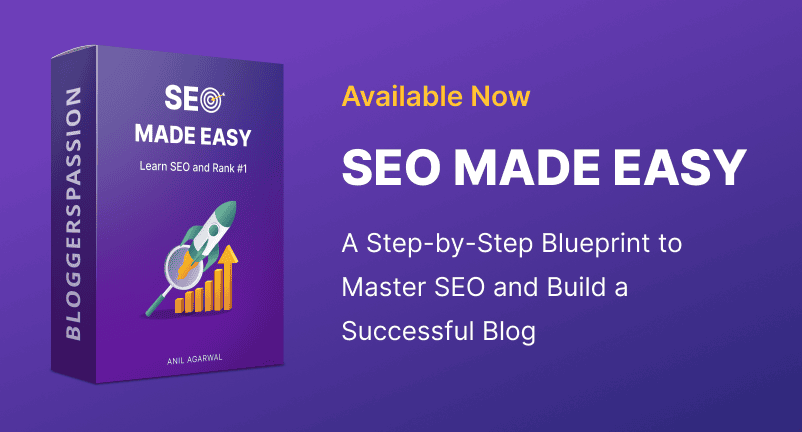How Does Ben Stace Do Semantic SEO
In the fast-evolving world of online advertising, semantic SEO is not optional but a need. Ben Stace is one of the names that comes up again and again in the discussions of the people about the innovations of the SEO. The theory is claimed to have swept the industry through its graceful approach to search algorithms and user intent by Stace. But how does Ben Stace do semantic SEO so as to render him different? This analytical paper is going to illustrate his tactics, methods, and philosophy and will also provide the facts that could be assumed by the modern-day marketers and content thinkers.
Research on the semantic SEO 2025
In order to acquaint ourselves with the way Ben Stace is doing semantic SEO, we would first need to have a fairly rudimentary idea of what semantic SEO actually is and then how it is done. Semantic SEO is important because it does not merely attempt to optimize content using the keyword but on meaning. It is also a continuation of the predictive search engine role in identifying intentions of the users and responding to the queries in regard to new changes such as BERT and MUM trends introduced by Google.
Unlike the traditional SEO that focused on specific phrases, semantic SEO focuses on the development of topical authority, placement of context, and network of keywords. He does not consider content as meaning words. Instead, he develops it as he devises the response to a set of related user questions. This is where he can cook up many of the strategies.

📊 Ben Stace’s Semantic SEO Strategy: A Breakdown
| Strategy Element | Description | Tools Used |
|---|---|---|
| Philosophical Foundation | SEO built on user satisfaction and real-world search behavior, not just ranking. | Human-centric principles, natural language modeling |
| Pillar Pages & Clusters | Builds detailed pillar pages supported by semantically linked topic clusters. | MarketMuse, Frase, SurferSEO |
| Intent Mapping | Aligns content with searcher intent: informational, navigational, transactional, commercial. | Clearscope, Semrush |
| Natural Language Queries | Content optimized for voice search and natural conversation patterns using synonyms and semantic proximity. | Google NLP API, TextRazor |
| Schema & Structured Data | Uses structured markup (FAQ, Product, Article) to enhance SERP visibility and improve indexing. | Schema.org, Rank Math, Merkle Schema Generator |
| Entity-Based Optimization | Focuses on relationships between entities (e.g., people, brands, topics) instead of simple keywords. | InLinks, Kalicube Pro |
| Zero-Click Optimization | Designs content to win featured snippets and answer boxes (40–60 word summaries, bullet points, etc.). | SurferSEO, Clearscope |
| Topic Ontologies & Graphs | Creates conceptual maps to link ideas and ensure coverage depth and coherence across the site. | WordLift, Neo4j |
| Real-Time Updates | Continuously updates semantically weak or outdated content based on real-time rank loss and content drift. | Jasper AI, Content Harmony, analytics suites |
| E-E-A-T Signals | Establishes trust with author bios, source links, citations, and accurate timestamps to align with Google’s Helpful Content System. | Internal processes, authoritative sourcing |
| Multimodal Semantics | Integrates videos, audio, images, transcripts, and alt text for a richer semantic experience. | Otter.ai, Canva, AI transcribers |
| Competitive Semantic Analysis | Reverse-engineers top content using semantic coverage and topic modeling rather than keyword spamming. | SurferSEO, MarketMuse, Frase |
| Core SEO Toolkit | Uses a variety of advanced SEO tools daily to optimize semantically meaningful content across platforms. | SurferSEO, MarketMuse, InLinks, WordLift, Clearscope, Semrush, Jasper AI, Google NLP API, Schema.org |
Ben Stace Philosophical Ori
As one goes through How Does Ben Stace Do Semantic SEO, it becomes obvious that he possesses these tactics that are informed by the philosophical method. He does not only enjoy being ranked; he enjoys serving. Stace has a belief that the search engines are user-centric tools, and thus his writings have to be self-reflective of the way human beings search, think, and find solutions. It is just one of the principles that would single him out on another scale.
It is the user behavior with which he is on the same side, and other humans are chasing after algorithms? It means living on a keyboard-based rhythm of chat, natural-language query, and long-tail subject matter relevance. Instead of being strict on volume, he aims at satisfaction.
Guidelines Pillar Pages and Content Clusters
The creation of the pillar pages and the content clusters is the creation of one of the simplest methods of approaching semantic SEO today. How does Ben Stace do semantic SEO? Which one? The pillar articles that deal with the general topics in a detailed manner form the basis of his content ecosystems. These pillar pages are in turn supported by cluster content individual pages containing specific subtopics, which direct to the pillar.
This internal linking practice is an indication to the search engines that this topic is earthed. The result? Better success in the standings and a longer permanence. The professional retrieval of his topic clusters comes by the help of tools such as MarketMuse, Frase, and SurferSEO that enable additional tracking of the semantically pertinent material and content gaps.
Intent Map Plan Main Space
The second to be asked, then, is: with intent mapping? He classifies the content into four types of intent, among which there exist informational intent, navigational intent, and transactional and commercial intent. Every piece of content has its mission and goal of moving the users through the funnel. Specifically, a post titled what is semantic SEO? Will be informational in nature, and the internal links to the pages that create conversion will be built. Stace is also competent enough to couple content with intent, and that is why he can dominate whole niches and not individual words. To create the content, he frequently installs tools such as Clearscope or Semrush that provide the clear intent SERP.
Inquiry and dialogue combinations
Having discussed the major distinctions between the approaches Ben Stace uses in semantic SEO, one must make a mention of natural language pattern usage. He maximizes semantic proximity instead of willful placement of keywords. They consist of synonyms, pertaining phrases, and co-words. He uses, e.g., Google NLP API or TextRazor to identify the most relevant entities and decide about their relevance.
How does Ben Stace do semantic SEO based on such data? It is a way to write the piece so the title would be something that the person would prep in language that would be a question to a voice assistant or a question to Google. His writing flows well and allows room to satisfy algorithms without the same numbers doing that.
Schema Markupand Structured Data
Ok, so in structured data, how about we mention it first, say, the technical type, like schema? He implements schema markup on every important page of the site, i.e., in the blog posts or on the pages of separate products or the frequently asked questions. This provides Google and other search engines with more of an idea of how the content is structured and what the context entails.
Setting his views aside, he employs tools such as Schema.org and Rank Math in most of the cases, along with a schema generator provided by Merkle. This not only boosts the click-through rates using the rich snippets, but also it boosts crawlability as well as contextual indexing. The company now holds more weight in people also ask boxes and consequently more authority with the help of the FAQ schema pursued by Stace.
Entity-Based Optimization
It is impossible to disagree with the importance of Ben Stace in semantic SEO without mentioning that he has a very clear idea of entity-based optimization. What Google knows on its own are entities such as brands, people, or places. Stace is not interested in bare keywords; she exposes her pieces in the domain of known things and their connections.
He employs tools like InLinks and Kalicube Pro to track down the most productive entities to use in a given niche to create semantically varied resources. This gives an entanglement of signification that the Google Knowledge Graph knows about. How does Ben Stace do semantic SEO? Is it a tool? Reading all the words as a point in the bigger picture of knowledge.
Zero-Click Optimization
Next slightly underrated is zero-click content. The secrets of obtaining zero-click results? He forms short and precise answer boxes, definitions, and summary paragraphs, which should be included in featured snippet websites of Google. These content blocks include 40-60 words, and they are the answers without flesh to frequent queries by users. He fully optimizes his snippets with content by following the headings, such as question-based headings (H2s and H3s), and creates a bullet list and data tables. The manifestation of such positioning is the development of brand awareness irrespective of non-clicks, which is in the future. Vanity metrics are a power grab.
Topics: Graphs and Ontologies
Avoiding yet further up, how does Ben Stace do semantic SEO and topic graphs? He creates topic ontologies—tree structures that display subject-subtopics and term relations. It proves very helpful where depth and specificity of the niches are concerned. He is able to visualize and interrelate concepts within a complete site by using software such as WordLift and Neo4j.
It does not only add to the semantic meaning but also makes a contribution to the site architecture as well. The sites are organic in the sense that the flow is in the shape of an intellectual concept and not in the shape of an SEO-driven plan. Once a user is able to gaze at what he or she wants easily, the engagement increases to the next higher level, and then come the rankings.
Real-time Semantic Update
Content in a highly active niche market expires very fast. How does Ben Stace do semantic SEO? What can he do to keep his content current? Using real-time semantic updates. He relies on using AI such as Content Harmony, Jasper, and analytics to detect ranking loss, so he could just rewrite semantically specific pages. He performs title modifications; instead of rewriting an entire new article, he introduces new related words or creates a new article by replacing obsolete parts. Such time does not go to waste and is effective in this specific optimization. As part of his writing process, he sets uniform semantic restrictions in a way that all his articles are topically similar.
Semantic Signals and Signals of E-E-A-T
The third factor, which refers to trust, cannot be ignored. R and improve Google E-E-E-A-T (Experience, Expertise, Authoritativeness, and Trustworthiness)? He provides the author biographies, quotations of some known authorities, times of publications, and external links to some trustworthy voices.
The other aspect by which he can guarantee that every article will undergo the Google Helpful Content System is the element of making it factual, actionable, and able to fulfill user expectations. Signal necessity trust alone will only give returns as long as there is semantic SEO about the same thing; this throws literal ringing in the ears of Stace. The credibility he supersedes in the URL and the construction of the user experience to attain the complete work of SEO.
Multimodal Semantics: The Text Is the Beginning
One of the modern search engine optimization questions and answers is, How Does Ben Stace Do Semantic SEO in a Multimedia World? The semantic theme is supported through the usage of videos, sound scripts, infographics, and alt text of images. He also uses transcription services such as Otter.ai, which grants text copies of video materials and couples them perfectly with blog posts. This increases the usability of the keywords and decreases the bounce rates.
They are in a position to refine actually up to as far as the semantics of their multimedia content, i.e., they do not simply label their multimedia content with search engine optimization (SEO) concepts; they are so much in a position that they position their multimedia content that can be of use as far as narrative clearness is brought to the table. This provides a human-consumable, machine-friendly content experience.
Looking at Competitive Analysis through Semantic Prism
The competition should be familiarized. How does Ben Stace do semantic SEO by competitive analysis? He reverse-engineers the pages of the top rank using the tool named Surfer SEO content editor and the content score framework of MarketMuse. He not only numbers the number of keywords that his competitors put to use but also the semantics of the topics. Upon what questions are they answering? What are this and those bodies? What is contextual coverage, and how complex is it? No, with this intelligence he does not copy; he improves. He observes blank spaces and perceives them with funnier, more abundant matters that span quite vast semantic layers.
Ben Stace Semantic SEO Tool Elements
It may be asked, how does Ben Stace do semantic SEO so steadily? One of the aspects of the answer is his toolkit. This is part of his implements that he uses daily:
- SurferSEO: To find the content scoring and the competitive gap the location of content scoring and competitive gap analysis is also possible with the utilization of SurferSEO.
- MarketMuse: To help plan content, topic modeling
- InLinks entity analysis and internal linking analysis
- WordLift: To generate ontologies and structured data
- Phrase: optimization and AI Content briefs
- Semrush: SERP intention and cluster of the keywords
- Clearscope: to prioritize significance and semantically expand it
- Google NLP API: To calculate natural language structures
- Jasper AI: because this copy of the foundation should also be made Jasper AI
- Tool: The schema.org: Tools to code, test, and validate structured data
The Significant Points on the Ben Stace Strategy
In some sense that you may learn freely? One of those things is that he writes code not for a bot but for humans. Second, he does not perceive SEO as a trick, but he administers it as a system. Third, he uses AI but does not allow it to mix with the quality. Fourth, he is focused. He does not focus on numbers but content. And finally, he now and then reinvents his strategy to address the changes in the patches of the algorithms and user behavior. He is evidence-based, semantically saturated, and accommodating—the human being triumvirate one cannot afford to lose.

✅ Key Principles from Ben Stace’s Strategy
| Principle | Explanation |
|---|---|
| User-First | Content prioritizes user satisfaction, not just algorithm hacks. |
| Semantic-Rich, Not Keyword-Stuffed | Focus on meaning and entity relationships over keyword frequency. |
| AI-Assisted, Not AI-Dependent | Uses AI to assist but ensures human editing and semantic refinement. |
| Constant Evolution | Strategy adapts based on search algorithm shifts and behavior patterns. |
| Focused Execution | Builds niche authority through topic clusters and intent alignment, not scattered content. |
In conclusion, Ben Stace has got special semantic SEO.
With How Does Ben Stace Do Semantic SEO examples all over our backs, it is clear that his style is a combination of the polished tool and the understanding of the user. He does not drive ranking exactly; he does a ranking, and this is clarified by authority and value in context. It goes as far as pillar strategies and structured data, entity-based structures, and AI-guided updates, where each step can be measured and user-efficient.
His ideas are a healthy shift towards the environment of keyword abundancy and concise posts. It is no wonder, then, that such an understanding is not merely academic but rather a step-by-step guide to every individual who will be able to provide sustainable high contribution to SEO in the future, no later than in 2025.
FAQs
Which semantic SEO tools does Ben Stace have?
As these tools, Ben Stace employs in the development and optimization of semantically rich materials are SurferSEO, MarketMuse, InLinks, and Frase in conjunction with Google NLP API.
What is different between you and others?
He places more emphasis on the meaning, the intent of the user, and the type of relationship between entities rather than the repetition of keywords that makes his content more search engine friendly in terms of how it understands queries in this day and age.
Does aesthetically nice structured data lend itself to what Ben Stace is doing with semantic SEO?
YES, he does so much more than leverage schema markup to win to be more recognizable by the search engines and have more visibility and to attain the ability to earn rich snippets.
Does Ben Stace work with AI to generate content?
He does so so that the AI-generated text will be semantically airtight (and copy-edited in pronunciation, accuracy, and impact).
What about Ben Stace’s semantic SEO? Can a novice implement it?
Absolutely. On the one hand, the major concepts can be further improved, but on the other, the basic facts, e.g., intent mapping and content clusters, may be used by all advertisers.

